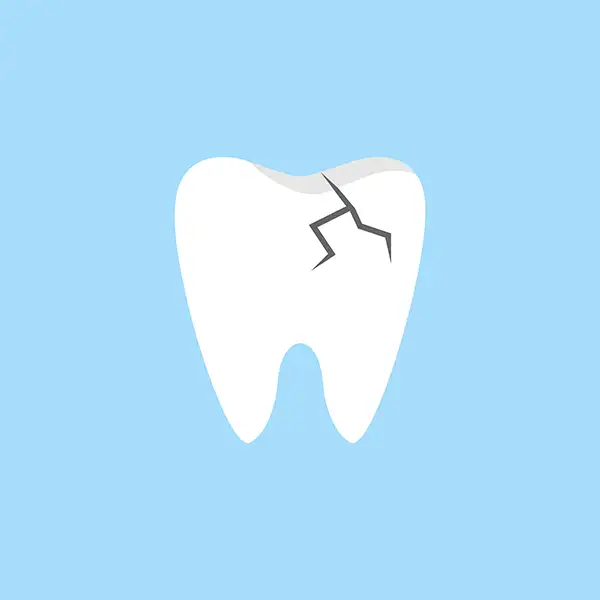Endodontic Treatment for Teeth with Crown Fractures Crown fractures are common dental injuries that affect the appearance of the teeth, as well as their function. These fractures may be minor, and only crack the dentin and enamel, but some crown fractures go deep beneath the gum line, or expose the pulp to bacteria. When a patient experiences a crown fracture, it may require endodontic treatment to save the natural tooth and restore the smile. Crown fractures are common dental injuries that affect the appearance of the teeth, as well as their function. These fractures may be minor, and only crack the dentin and enamel, but some crown fractures go deep beneath the gum line, or expose the pulp to bacteria. When a patient experiences a crown fracture, it may require endodontic treatment to save the natural tooth and restore the smile.Understanding Crown FracturesCrown fractures occur when the visible part of the tooth above the gum line is damaged. These fractures range from minor chips to severe breaks that expose the tooth's inner layers to infection. In some cases, the fracture can extend below the gum line, which complicates the treatment process. There are two main types of crown fractures: Uncomplicated Crown FracturesThese involve only the enamel and dentin layers of the tooth. The pulp is not exposed to bacteria. Complicated Crown FracturesThese fractures extend into the pulp chamber, expose the sensitive inner tissues of the tooth to bacteria, and may become infected. Diagnosis and AssessmentWhen a patient is diagnosed with a crown fracture, our team performs a thorough examination to observe the extent of the damage and determine the most appropriate treatment plan. An assessment may include:
We also work with patients closely to find the best endodontic treatment for their case, where we consider factors such as age, overall oral health, and the time elapsed since the injury occurred. Treatment OptionsThe choice of treatment for a crown fracture depends on the severity of the fracture, the extent of pulp involvement, and the stage of root development. Here are some common treatment options: Direct Pulp CappingFor small pulp exposures that are treated within a few hours of the injury, direct pulp capping may be attempted. In this procedure we place a protective material directly over the exposed pulp to promote healing. Partial PulpotomyA partial pulpotomy is suitable for young patients with small pulp exposures treated within 14 days of the injury. In this procedure, we remove a small portion of the pulp tissue and place a protective material over it to encourage healing. Complete PulpotomyIn cases where the pulp exposure is more extensive, a complete pulpotomy may be necessary. In this procedure, we remove the entire coronal portion of the pulp, but maintain the radicular pulp. Root Canal TherapyFor teeth with irreversible pulp damage or extensive fractures, root canal therapy is often the best treatment to remove infection and prevent reinfection. A root canal treatment starts with removal of the infected or damaged pulp tissue. Next, we clean and shape the root canals, and fill them with a biocompatible material to seal the tooth and prevent reinfection. The Root Canal ProcedureWhen root canal therapy is necessary for a tooth with a crown fracture, the procedure requires a few steps: PreparationOur team administers local anesthesia to ensure our patient's comfort during the procedure. A rubber dam is placed in the mouth to isolate the tooth, and maintain a sterile working environment. Access and Pulp RemovalAn opening is created in the crown of the tooth to access the pulp chamber, and the damaged or infected pulp tissue is removed. Cleaning and ShapingThe root canals are thoroughly cleaned and shaped using small files and irrigation solutions. This step is crucial to remove bacteria and debris from the canal system. Filling and SealingOnce the canals are clean and dry, they are filled with a rubber like material called gutta-percha. This material, along with a sealing cement, helps to prevent reinfection of the tooth. RestorationAfter the root canal procedure, the tooth still needs to be restored to its full function and appearance. We typically restore the tooth with a crown placement, however, other types of restoration may be preferred, depending on the case. This final step protects the treated tooth and fully restores the smile. Post Treatment Care and Follow-UpAfter endodontic treatment for a crown fracture, patients should follow these guidelines:
We monitor the treated tooth during follow up appointments to ensure proper healing and function. Long Term PrognosisThe long term success of endodontic treatment for crown fractures depends on various factors that include:
With proper care and maintenance, teeth treated for crown fractures can remain functional for many years. Alternative TreatmentsIn some cases, endodontic treatment may not be the best option for a tooth with a crown fracture. Alternative treatments may include: Extraction and ReplacementIf the fracture is too severe or extends too far below the gum line, extraction of the tooth may be necessary. The tooth can then be replaced with a dental implant, bridge, or denture. Endodontic treatment plays a crucial role in managing teeth with crown fractures. When we preserve the natural tooth structure and restore its function, these procedures help our patients maintain their oral health, the appearance of their smiles, and their quality of life. Timely intervention and appropriate treatment selection are key factors to achieve successful outcomes for teeth affected by crown fractures. As dental technology and techniques continue to advance, the prognosis for these injuries is likely to improve further, and offer patients even better options to save and restore their damaged teeth. |